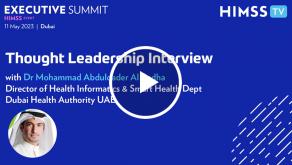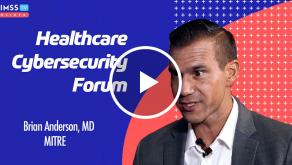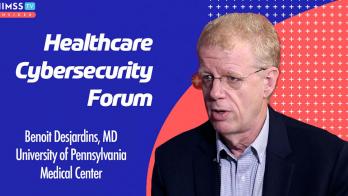How one hospital tweaks its EHR to fight alert fatigue

In Healthcare IT News' July cover story, which explores new and innovative approaches to clinical decision support at a time where it's needed more than ever, one healthcare professional voiced a common complaint about electronic health records: the near-constant, often-annoying profusion of system alerts.
Too often, when clinicians think of CDS, "they think of a pop-up alert: something that, in the middle of what you're doing, gives you a piece of information that the technology thinks is important and wants you to do something to fix," said Gregory Paulson, deputy director of programs and operations at New Jersey-based Trenton Health Team.
But technology doesn't always know best.
Paulson offered an analogy: "To me, it's the equivalent of going online to shop on a website or pay your bill and getting these pop-up adds," he says. "If you're shopping on Amazon and you do it frequently, obviously you know where to click. You're familiar with that website you know how to interface with it in a way that is seamless. So if I then institute a pop-up alert – one that interrupts your process when you're not expecting it and you don't want to stop – you're not going to want to shop at Amazon."
Same goes for physicians: The more they're irritated by unneccesary alerts, the less they like using their EHRs.
While alerts can be life-saving – flagging dangerous drug-allergy interactions or sounding the alarm about inappropriate doses – too many are unneeded, telling docs and pharmacists things they already know.
[Related: How does your EHR stack up? See our 2015 satisfaction survey results.]
As AHRQ points out, "Alerts are only modestly effective at best. A systematic review of computerized reminders found only minor improvements in targeted processes of care, and, while CPOE systems have been shown to markedly decrease prescribing errors, this can largely be ascribed to their ability to standardize drug doses, provide decision support, and eliminate errors from poor handwriting or incorrect transcriptions."
As such, clinicians "generally override the vast majority of CPOE warnings, even 'critical' alerts that warn of potentially severe harm," according to AHRQ. Meanwhile, "alert fatigue increases with growing exposure to alerts and heavier use of CPOE systems. This finding is intuitive, but also raises the important implication that without system redesign, the safety consequences of alert fatigue will likely become more serious over time."
At The University of Vermont Medical Center, clinicians have been using a new CDS technology to customize their EHRs, tailoring type and number of interaction alerts to a more manageable level.
"We transitioned from a homegrown EHR system five or six years ago," says Larry Lamb, clinical application analyst in the pharmacy at UVMC. In that self-developed system, "we built all the interactions tables so we had total control of how many interactions were firing," he says.
But when UVMC finally went live on Epic, "we did not understand just how many alerts were going to fire." For roughly 200-250,000 orders per month, "we were seeing about 150,000 alerts," says Lamb – sometimes as many as 175,000.
At first, "we did the sledgehammer approach," says Wes McMillan, UVMC's clinical pharmacy manager.
Alerts generally have four levels, and the three most serious – severe, moderate and contraindicated – were the ones UVMC was most concerned about.
"When we saw how many were firing, we turned off moderate and severe for physicians in the beginning, and we left them all on for pharmacists," says Lamb.
"We tried to use some of the Epic tools and set the alerts for the different provider types: For the inpatient side, the physicians were only seeing contraindicated alerts; nursing staff too," says McMillan. "On the outpatient side we also allowed providers to set the systems to allow providers to see alerts as well."
UVMC also implemented a CDS tool called AlertSpace. Developed by First Databank, the technology enables hospitals a much wider latitude for enabling and disabling alerts, letting them customize how – and how often – they fire, according to its own needs and informed by its own institutional expertise.
Whether it's for drug-drug, drug-allergy or drug-disease reactions; precautions or dosage ranges, the Web-based tool allows fine-tuned modification of medication alerts, with clinicians able to edit or turn off specific prompts – tracking those customizations to gauge their effectiveness.
"We developed a three-pronged approach to managing alerts," says Lauren Hertel, AlertSpace Product Manager. "The first piece is actually fine-tuning existing content by critically evaluating the evidence and considering the appropriateness of alert. The second is introducing more parameters and filters into the data – for example being able to adjust an alert based on a patient's lab value."
The third was to focus on the ability of a provider to "locally customize for their needs," she says. "Different institutions have different clinical perspectives and patient populations and care environments. It doesn't really work to have one-size-fits-all alerts."
As for UVMC, "Our first step with AlertSpace was to try to deal with all the alerts pharmacy was seeing," says Lamb.
The tool offered the opportunity to "go into specific alerts and really fine-tune them," he says. "One example: There are some alerts that are kind of generic for cardiac meds. But they would also include ophthalmic meds that are in the same class. Those alerts really weren't significant, and we were able to go in and turn those products off.
"We log into FDB, go into the alert we're looking to modify, and then there are options about what to do. Sometimes we change the severity level. We may turn certain products on or off within that alert. We've probably tweaked about 300 alerts."
That's enabled UVMC to reduce the number of alerts per order from .77 down to "probably around .5," he says.
"By turning off the unimportant alerts, people are seeing ones that are much more clinically significant, and probably not blowing by them quite as often as they have in the past."
























